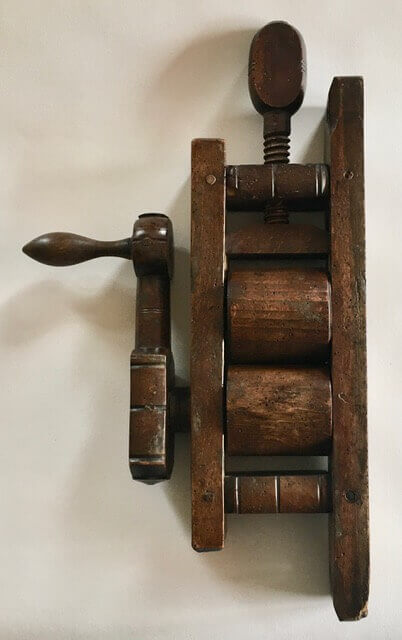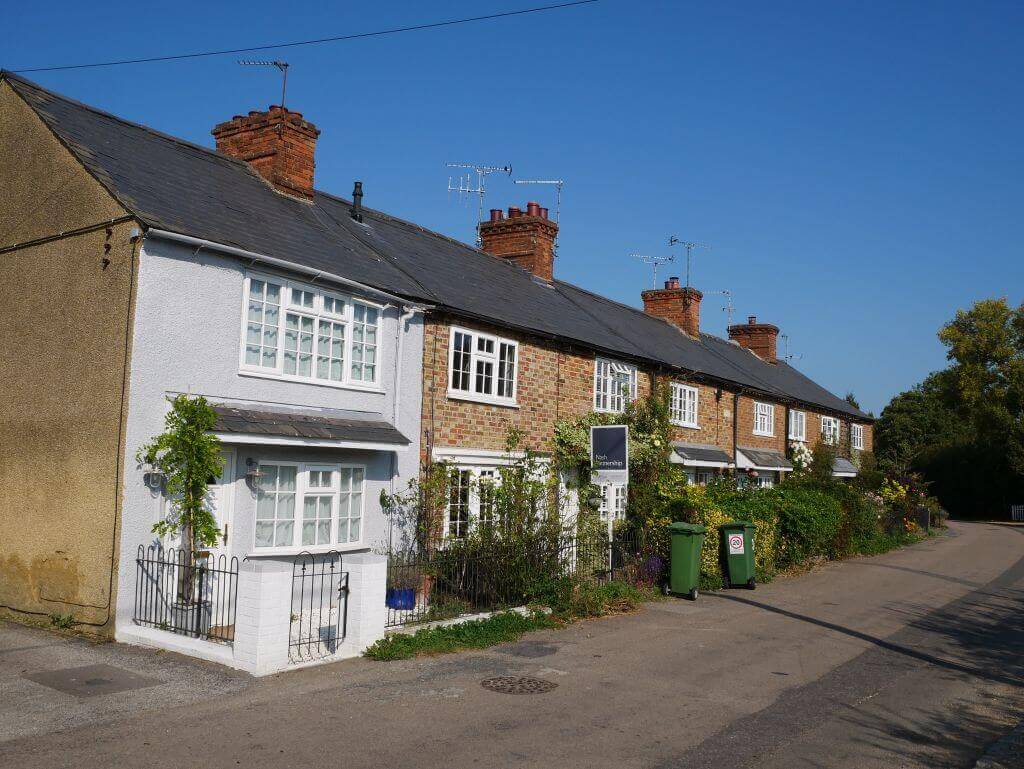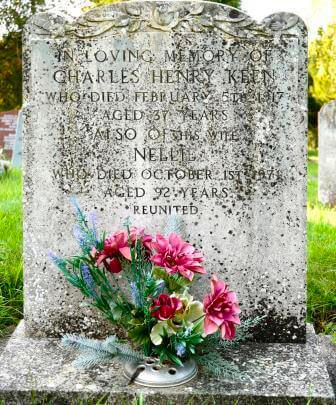
The Story of Nellie Davis
by Vanessa Worship
Another fascinating account of a local craftsperson, uncovered by Vanessa Worship, one of the volunteers for Woodlanders’ Lives and Landscapes.
In March 2020, Veronica Main wrote a fascinating blog, entitled ‘Straw Plaiting in the Chilterns’, for the Woodlanders’ Lives and Landscapes project, in which she invited volunteers to help research the lives of straw plaiters in the north Chiltern villages.
I already knew about the impact of straw plaiting on my home town of Chesham so when I heard from Lesley Hoskins, Research Associate for the Woodlanders Project, that there was a recording of an interview with Mrs Nellie Keen, née Davis, of Buckland in the British Library, I couldn’t wait to listen to it and then to try and find out more about Nellie from primary sources.- Vanessa Worship
Below is the story of Nellie Davis, uncovered by Vanessa Worship.
The Story of Nellie Davis
As a child of the 1880s, Nellie was a straw plaiter. In common with many women and children in the 18th and 19th centuries in the towns and villages of the north Chilterns, Nellie spent many hours making lengths of straw plait, which were then sold to dealers from Luton at Tring market. The chalky Chiltern soil was perfect for growing the good quality wheat necessary for producing strong but flexible straw. Luton had become the centre of the straw hat-making industry in the 19th century. The factory workers would painstakingly sew the lengths of plait together to make straw boaters for men and straw hats for fashion-conscious Victorian women. Initially the sewing would have been done by hand but later on, from the late 1870s, most hats were sewn by machine. During the period from 1850 to 1890, up to one third of Buckland folk were involved in straw plaiting, either as plaiters, cutters or dealers. There was even a plaiting school in the village at one time, run by Mrs Eliza Ives.
Nellie Keen was aged 79 when she was interviewed by Stanley Ellis of Leeds University, for the Survey of English Dialects. The recording detailed below offers a fascinating insight into the life of a straw plaiter in Buckland parish in the late 1800s. Nellie talked quite fast and with a broad Bucks accent so parts of the recording are a little difficult to understand. Nevertheless, we can learn a great deal about the process of straw plaiting from her recollections:
“The men had to go round the country to straw ricks and draw all the better straws out the ricks and make ‘em into great big bundles…they used to bring ‘em round to the people…
“Oh, lots of different kinds of plaiting. I always done what they call the pearl plait but there was brilliant plait…beautiful plait that was, and railroad…they used to dye the straws for that you see, a mixture, but I always done the pearl…
[Author’s note: The straw was first split into splints, using a straw splitter. Then the splints were softened using a splint mill – see below]
“And then when you’d done this plait, you used to clip it and mill it… [the mill] was a little thing that’s hooked up on the wall, you could unscrew it and screw it, and with a handle at the side like a little tiny mangle I should call it…
[When the length of plait was finished it was clipped to remove the joined ends, then milled to make it look more even and appealing to the buyers.]
“And then after that you had to do it up round your arm the old-fashioned folk used to do it, in lengths of ten yards you see and then put them together and two ten yards [was] a score of course, and then tie it up with string like this ’ere as you go along – oh dear now I’ve dropped it – and then tie it all up and take it to Tring market to sell it… [Nellie was clearly demonstrating the process to the interviewer here]

Wooden splint mill from the 1800s, Photograph courtesy of Veronica Main
Wooden splint mill from the 1800s
Photograph courtesy of Veronica Main
“…ooh everybody had to do it years ago to turn a shilling or two. The women and children, everybody…
“They used to have what they called a plaiting school in the children’s holidays…a woman used to have all the children sit round and they used to sit plaiting straws… [parents] paid about three ha’pence a week for the woman having you there…
“You had to bring it back home and your mother’d take it to market and sell it…only four or five pence a score, that wasn’t much was it? And then you’d got to walk to Tring to take it. There used to be an old market house at Tring years ago, they’ve pulled it down now, and they used to go under there and the plait buyers used to come round…
“Yes, all the village people used to plait years ago.”
—
We can learn more about Nellie from records such as the census. She was born in Buckland on 2nd June 1878, the daughter of Thomas and Eliza Davis. Thomas was a ploughman in the 1881 census and his mother, Ann, was living with them in Model Row, Buckland. Both she and Eliza were straw plaiters. There were also three older children in the family – Anne, Elizabeth, and William. Model Row was a neat row of eight small cottages, built in 1863 and still standing today:

Model Row, Buckland
Nellie went on to live most of her life in Buckland. In the 1891 census, at the age of twelve she was living with her grandmother while the rest of the Davis family had moved to the hamlet of Walton, Aylesbury. By this time there were only 41 straw plaiters left in Buckland Parish and about twenty per cent fewer agricultural workers than there were in 1871, so we can speculate that the family may have moved to the town in search of better employment opportunities. Indeed the census shows that Annie and Sarah E(Lizabeth) were both working as factory hands and William was a general labourer. There were also three younger children, George, aged seven, Alice, four, and Edith, two months. Thomas was working as an agricultural labourer. It’s possible that Nellie had been left behind in the village to look after her grandmother, Ann, who was then aged sixty-three. She died in 1909, aged 81.
Nellie married Charles Henry Keen in 1904 and in the 1911 census they were living at Model Row with five children: four girls, Annie, Nellie, Dorothy and Lily; and a boy, Charles Henry, and the civil registration records show that another daughter, Doris, was born in 1914. It must have been a bit of a squeeze for the Keen family with eight of them living in a two-up-two-down cottage. Charles Henry Keen was a chimney sweep and had been born in Aston Clinton but sadly he died in 1917 at what would even then be considered the young age of thirty-seven. His death certificate shows the cause of death to be myocarditis, inflammation of the heart, so poor Nellie was left to bring up six children alone. By the time of the 1939 Register, she was living alone at 3, Model Row, Buckland. She never remarried and lived to be 92. Charles and Nellie are buried together in the churchyard of All Saints Church, Buckland.

—
Acknowledgements:
The author would like to thank Veronica Main for assistance with the finer details of the straw plaiting process.
—
To learn more about the Woodlanders’ Lives and Landscapes project, please visit their website.
You can also follow along on Twitter @WoodlandersL
Related news
Volunteers celebrated for their extraordinary work on heritage project
In October, volunteers with the Woodlanders' Lives and Landscapes project were invited to a celebration of their efforts over the past four years.
Housing and Life in the Chilterns before the First World War
We continue to delve into the fascinating lives of the tambour beading girls in Holmer Green and beyond, with Susan Holmes' latest Woodlanders Lives' and Landscapes blog
Stories of tambour beading in the Chilterns, Part 3: the local workers
We continue to delve into the fascinating lives of the tambour beading girls in Holmer Green and beyond, with Susan Holmes' latest Woodlanders Lives' and Landscapes blog




